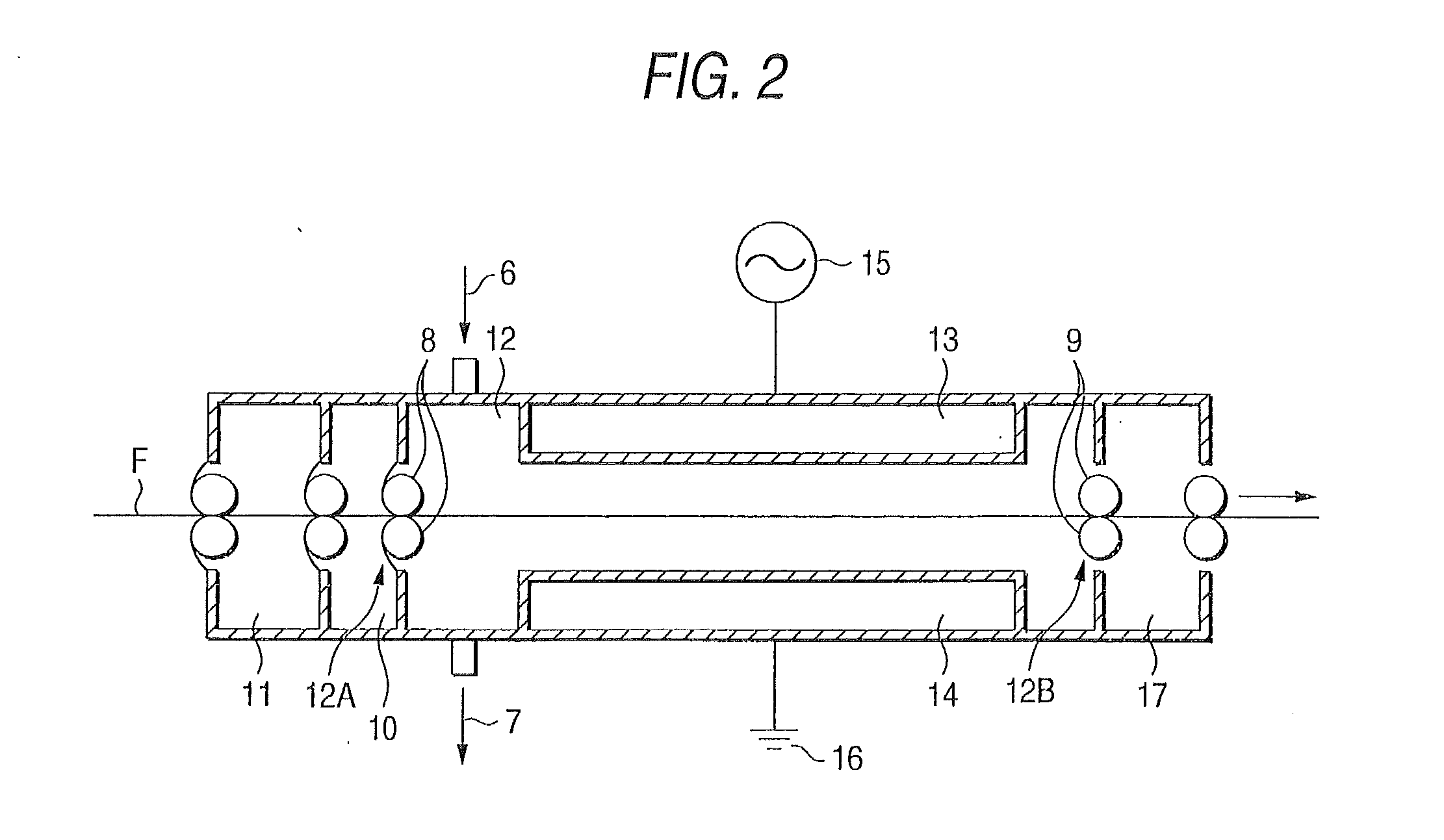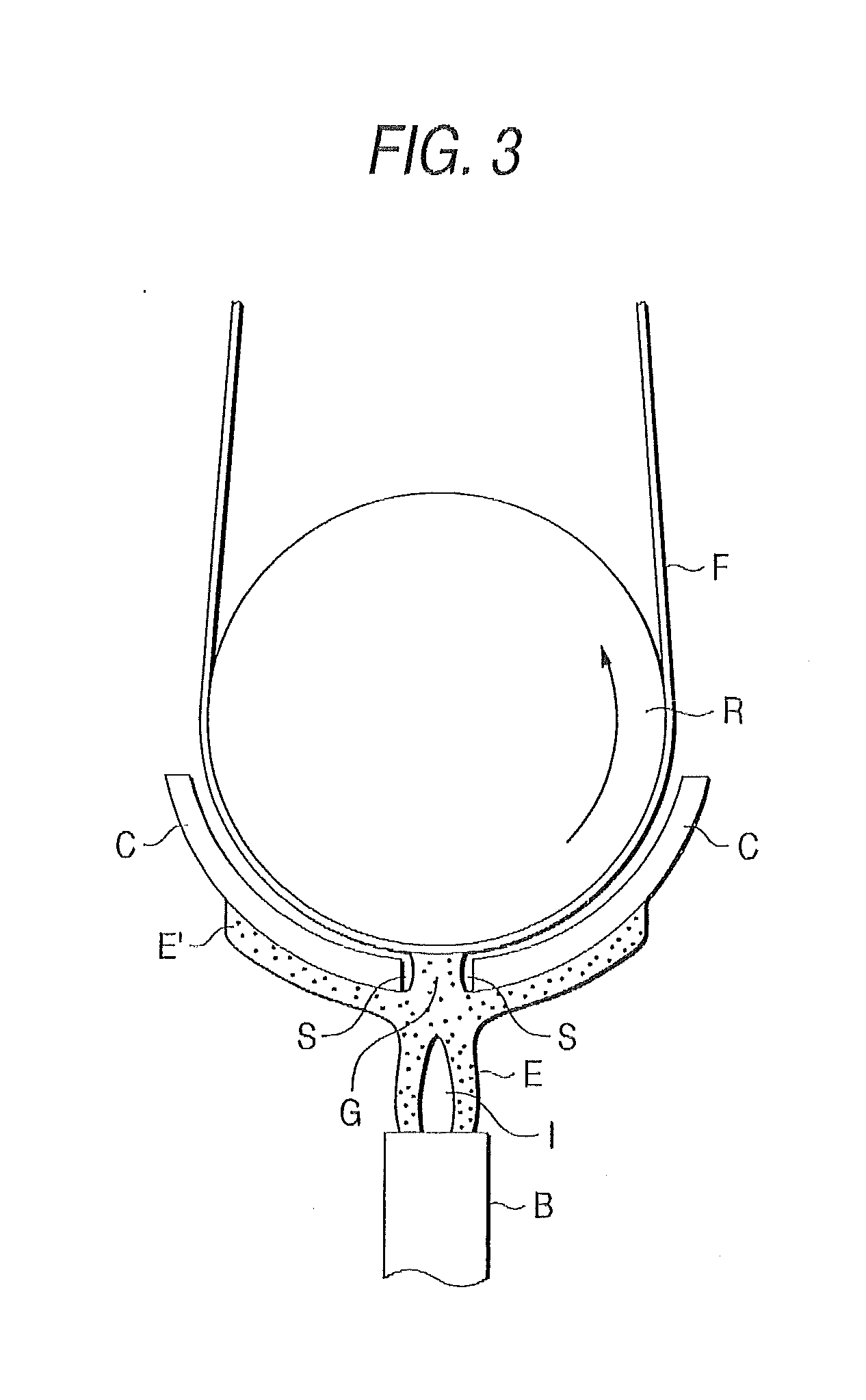Polymer film, and optically-compensatory film, polarizer and liquid-crystal display device comprising the same
a technology of optical compensation and polymer film, which is applied in the direction of instruments, polarising elements, transportation and packaging, etc., can solve the problems of difficult production of reduced rth, incongruous overall in-plane optical properties of films, and reduced angle-dependent re change of cellulose acylate films
- Summary
- Abstract
- Description
- Claims
- Application Information
AI Technical Summary
Benefits of technology
Problems solved by technology
Method used
Image
Examples
example 1
Fabrication of Cellulose Acylate Films, Surface Treatment and Lamination Test of Polarizer
[0398]A composition described in Table 1 was put into a mixing tank, and stirred therein with stirring to dissolve the constitutive component, thereby preparing cellulose acylate solutions T-1 to T-5.
TABLE 1Components of Cellulose Acylate Solution (unit: part by mass)CelluloseCellulose AcylateAcylateMethylenedegree ofamountSolutionChlorideMethanol1-ButanolsubstitutionaddedTPPBDPT-130054112.86 (acetyl)1007.83.9T-230054112.86 (acetyl)100nonoT-330054112.92 (acetyl)100nonoT-430054112.06 (acetyl)100nono0.79 (propyl)T-530054111.00 (acetyl)100nono1.70 (propyl)TPP: triphenyl phosphateBDP: biphenyldiphenyl phosphate
[0399]A composition described in Table 2 was put into a different mixing tank and heated with stiffing to dissolve the components, thereby preparing additive solutions U-1 to U-7. (In the Table, “Optical Anisotropy-lowering Agent” means “compound capable of lowering the optical anisotropy”)
TA...
example 2
Evaluation of Film Fitted in IPS-Mode Liquid-Crystal Display Device
[0443]The cellulose acylate film produced in Example 1 was fitted to a liquid-crystal display device and tested for its optical properties. In this Example, an IPS-mode liquid-crystal cell was used; while in the other Examples, VA-mode and OCB-mode liquid-crystal cells were used. The application of the polarizer and the optically-compensatory film produced by the use of the polymer film of the invention is not limited by the driving mode of these liquid-crystal display devices.
[0444]Using the cellulose acylate film sample 101A produced in Example 1, a polarizer 101A was fabricated in the same manner as in Example 1. To this, fitted was a monoaxially-oriented optically-compensatory film formed of an Arton film (by JSR) so as to make it have an optically-compensatory function. In this structure, the slow axis of the in-plane retardation of the optically-compensatory film was made perpendicular to the transmission axis ...
example 3
Evaluation of Film Fitted in VA-Mode or OCB-Mode Liquid-Crystal Display Device
[0448]The cellulose acylate films produced in Example 1 were tested, as fitted to or mounted on a liquid-crystal display device described in Example 1 of JP-A 10-48420, a discotic liquid-crystal molecules-containing optically-anisotropic layer and a polyvinyl alcohol-coated orientation film described in Example 1 of JP-A 9-26572, a VA-mode liquid-crystal display device described in FIGS. 2 to 9 of JP-A 2000-154261, and an OCB-mode liquid-crystal display device described in FIGS. 10 to 15 of JP-A 2000-154261. In all of these, the films were good in point of both image contrast and viewing angle characteristics.
PUM
| Property | Measurement | Unit |
|---|---|---|
| surface energy | aaaaa | aaaaa |
| surface energy | aaaaa | aaaaa |
| wavelength range | aaaaa | aaaaa |
Abstract
Description
Claims
Application Information
 Login to View More
Login to View More - R&D
- Intellectual Property
- Life Sciences
- Materials
- Tech Scout
- Unparalleled Data Quality
- Higher Quality Content
- 60% Fewer Hallucinations
Browse by: Latest US Patents, China's latest patents, Technical Efficacy Thesaurus, Application Domain, Technology Topic, Popular Technical Reports.
© 2025 PatSnap. All rights reserved.Legal|Privacy policy|Modern Slavery Act Transparency Statement|Sitemap|About US| Contact US: help@patsnap.com



